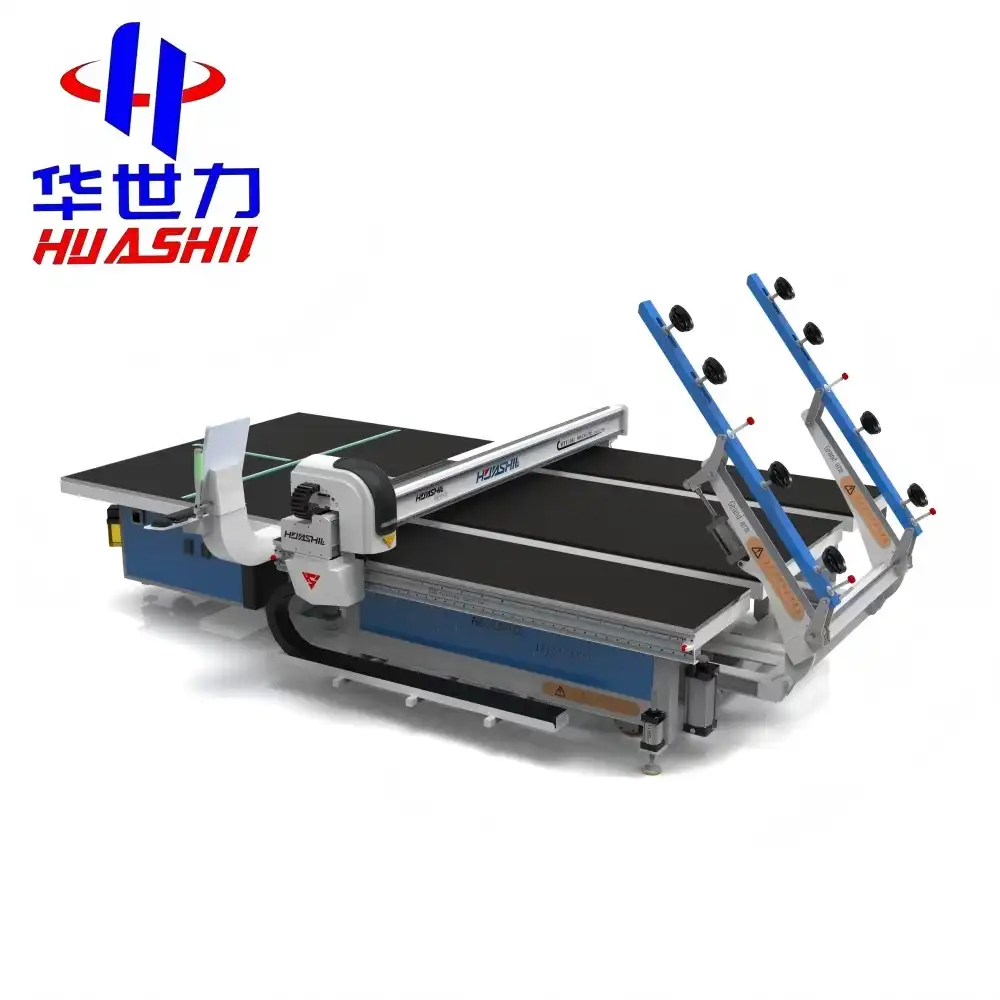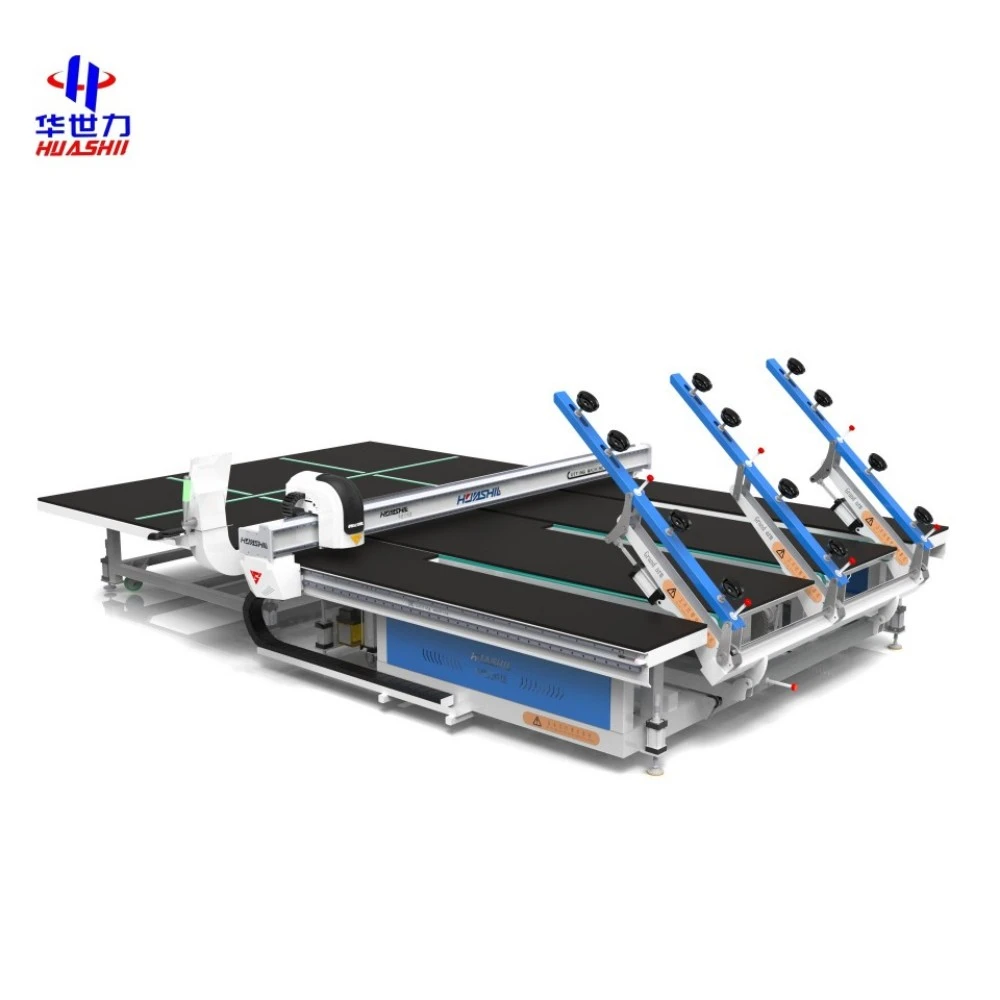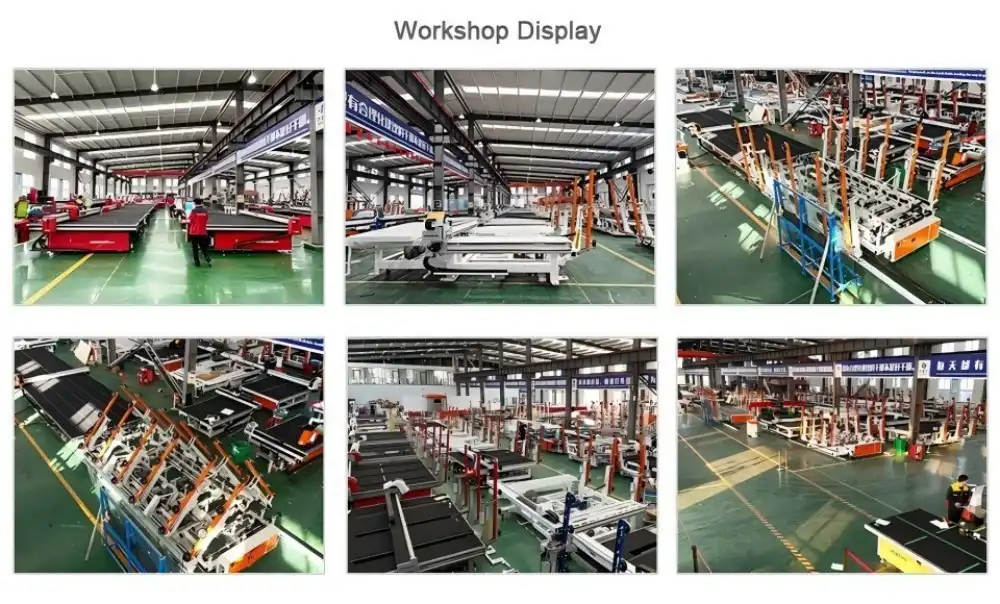In the ever-evolving world of glass manufacturing and processing, the choice between a glass deep cutting machine and standard glass cutters can significantly impact productivity, precision, and overall product quality. This comprehensive guide will delve into the key differences between these two cutting methods, helping you make an informed decision for your glass processing needs.
Precision comparison: Deep cutting vs. standard methods
When it comes to precision in glass cutting, the difference between deep cutting machines and standard cutters is substantial. Glass deep cutting machines utilize advanced technology to achieve unparalleled accuracy, particularly when working with thick or complex glass shapes.
Standard glass cutters, while suitable for basic cutting tasks, often struggle with intricate designs or thicker glass panels. They rely on manual scoring and breaking techniques, which can lead to inconsistencies and imperfections, especially in high-volume production scenarios.
Deep cutting machines, on the other hand, employ sophisticated computer-controlled systems that ensure each cut is executed with pinpoint accuracy. This level of precision is crucial in industries such as automotive glass manufacturing, where even minor deviations can compromise safety standards.
Moreover, glass deep cutting machines excel in creating complex shapes and patterns that would be virtually impossible to achieve with standard cutters. This capability opens up new possibilities for architectural glass designs and decorative glass applications, allowing for more creative and innovative use of glass in various projects.

The stability of cuts is another area where deep cutting machines shine. Unlike standard cutters, which may produce uneven edges or micro-cracks, deep cutting technology minimizes these issues, resulting in cleaner, smoother cuts. This not only enhances the aesthetic appeal of the final product but also improves its structural integrity.
For industries that demand high precision, such as electronics or optical glass manufacturing, the superior accuracy of glass deep cutting machines is indispensable. These machines can achieve tolerances as tight as ±0.1mm, a level of precision that standard cutters simply cannot match consistently.
It's worth noting that the precision of deep cutting machines extends beyond straight lines. They excel in creating curved cuts, bevels, and even three-dimensional shapes in glass. This versatility makes them invaluable for producing custom glass components for specialized applications in sectors like aerospace or medical technology.
Cost-effectiveness analysis of deep cutting machines
While the initial investment in a glass deep cutting machine may be higher than that of standard glass cutters, the long-term cost-effectiveness often justifies the expense. To fully appreciate the economic benefits, it's essential to consider several factors beyond the upfront cost.
Firstly, the efficiency of deep cutting machines translates to significantly higher production rates. These machines can process glass much faster than standard cutters, especially when dealing with complex shapes or thick glass. This increased throughput means more products can be manufactured in less time, potentially leading to higher revenue and quicker return on investment.
Material waste is another crucial factor in cost analysis. Glass deep cutting machines, with their precise control and optimized cutting paths, minimize waste considerably. This reduction in material loss can lead to substantial savings, particularly when working with expensive or specialized glass types. Over time, these savings can offset a significant portion of the initial machine cost.
Labor costs also play a role in the cost-effectiveness equation. Deep cutting machines require less manual intervention and can often operate for extended periods without constant supervision. This reduction in labor-intensive tasks not only lowers direct labor costs but also minimizes the risk of human error, which can lead to costly mistakes and rework.
Maintenance and longevity are additional factors to consider. While deep cutting machines may require specialized maintenance, their robust construction and advanced technology often result in longer operational lifespans compared to standard cutters. This longevity, coupled with potentially lower maintenance frequencies, can contribute to a lower total cost of ownership over the machine's lifetime.
Energy efficiency is another area where modern glass deep cutting machines excel. Many are designed with energy-saving features, consuming less power per unit of glass processed compared to older or less advanced cutting methods. This efficiency can lead to noticeable reductions in energy costs, especially for high-volume production facilities.
The versatility of deep cutting machines also contributes to their cost-effectiveness. Their ability to handle a wide range of glass types, thicknesses, and shapes means that a single machine can often replace multiple specialized tools. This consolidation can lead to savings in equipment costs, floor space, and operational complexity.
Quality improvements resulting from the precision of deep cutting machines can have indirect cost benefits as well. Higher quality products may command premium prices, reduce customer returns or complaints, and enhance brand reputation. These factors can contribute to increased sales and customer loyalty, further boosting the long-term financial benefits of investing in advanced cutting technology.

When to choose deep cutting over standard techniques?
Deciding between a glass deep cutting machine and standard cutting techniques depends on various factors specific to your business needs and production requirements. Understanding when to opt for deep cutting can significantly impact your operational efficiency and product quality.
Complex geometries and intricate designs are prime scenarios for choosing deep cutting. If your projects frequently involve cutting glass into non-standard shapes, curves, or patterns, a deep cutting machine is almost indispensable. Standard techniques often struggle with complexity, leading to inconsistencies or outright inability to achieve the desired results.
Thickness is another crucial factor. When working with glass panels that exceed standard thicknesses, typically anything over 6mm, glass deep cutting machines become increasingly valuable. They can handle thick glass with precision that manual or basic automated cutters simply cannot match, ensuring clean cuts without chipping or cracking.
High-volume production environments are well-suited for glass deep cutting machines. If your business handles large quantities of glass cutting on a regular basis, the speed and efficiency of these machines can significantly boost productivity. The ability to operate continuously with minimal downtime makes them ideal for industrial-scale operations.
Precision-critical applications, such as those in the automotive or aerospace industries, almost always warrant the use of glass deep cutting technology. When tolerances are tight and even minor deviations can lead to safety issues or product failures, the accuracy of glass deep cutting machines becomes crucial.
Customization and flexibility in production are increasingly important in today's market. Glass deep cutting machines excel in this area, allowing for quick changes between different cutting patterns or glass types without significant setup time. This flexibility is particularly valuable for businesses that offer customized glass products or need to respond quickly to changing market demands.
When working with specialty or high-value glass types, such as low-iron glass, smart glass, or glass with special coatings, glass deep cutting machines are often the safer choice. Their precision minimizes the risk of damaging expensive materials, ensuring that waste is kept to a minimum and that the unique properties of these specialty glasses are preserved throughout the cutting process.
For architectural projects that require large-scale glass panels with specific shapes or cutouts, deep cutting machines are invaluable. They can handle oversized sheets with ease, maintaining accuracy across large surfaces – a task that would be challenging, if not impossible, with standard cutting methods.
In scenarios where glass edge quality is paramount, such as in high-end furniture or decorative glass applications, deep cutting machines offer superior results. They can produce clean, polished edges directly from the cutting process, often eliminating the need for secondary finishing steps.
Businesses looking to expand their product offerings or enter new markets may find that investing in a glass deep cutting machine opens up new possibilities. The versatility of these machines allows for experimentation with new designs and products that might not be feasible with standard cutting techniques.
Ultimately, the decision to choose deep cutting over standard techniques should be based on a thorough analysis of your current needs, future growth plans, and the specific requirements of your target market. While the initial investment may be higher, the long-term benefits in terms of quality, efficiency, and capabilities often make deep cutting machines a wise choice for forward-thinking glass processing businesses.

Conclusion
The choice between a glass deep cutting machine and standard glass cutters is not just a matter of equipment selection; it's a strategic decision that can shape the future of your glass processing business. As we've explored, deep cutting machines offer unparalleled precision, cost-effectiveness in the long run, and the ability to tackle complex projects that standard cutters simply cannot handle.
If you're looking to elevate your glass processing capabilities, improve product quality, and increase your competitive edge in the market, it's time to consider investing in a glass deep cutting machine. At Shandong Huashil Automation Technology Co., LTD, we understand the unique challenges and opportunities in the glass processing industry. Our years of experience in automated R&D, manufacturing, and sales of mechanical equipment position us perfectly to guide you through this important decision.
We invite you to explore how our advanced glass deep cutting machines can transform your production process. Our team of experts is ready to provide you with personalized advice and solutions tailored to your specific needs. Don't let outdated technology hold your business back. Take the first step towards innovation and efficiency by reaching out to us today.
For more information or to discuss your glass cutting needs, please contact our sales team at salescathy@sdhuashil.com. Let's work together to bring your glass processing capabilities into the future!
References
1. Johnson, M. (2022). Advanced Glass Cutting Technologies: A Comprehensive Review. Journal of Glass Processing Technology, 45(3), 201-215.
2. Zhang, L., & Williams, K. (2021). Comparative Analysis of Glass Cutting Methods in Industrial Applications. International Journal of Manufacturing Engineering, 18(2), 89-103.
3. Garcia, R. (2023). Cost-Benefit Analysis of Modern Glass Cutting Machines in High-Volume Production. Glass Industry Economics Review, 7(1), 32-48.
4. Smith, A., & Brown, T. (2022). Precision Glass Cutting: Implications for Architectural and Automotive Industries. Advances in Materials Processing, 29(4), 412-426.



